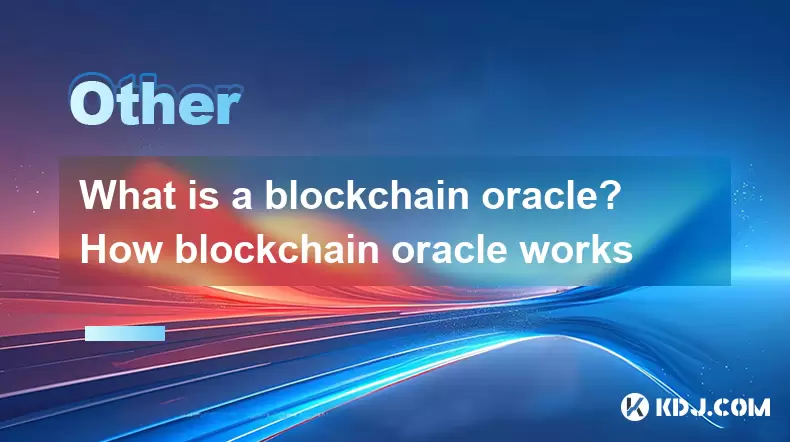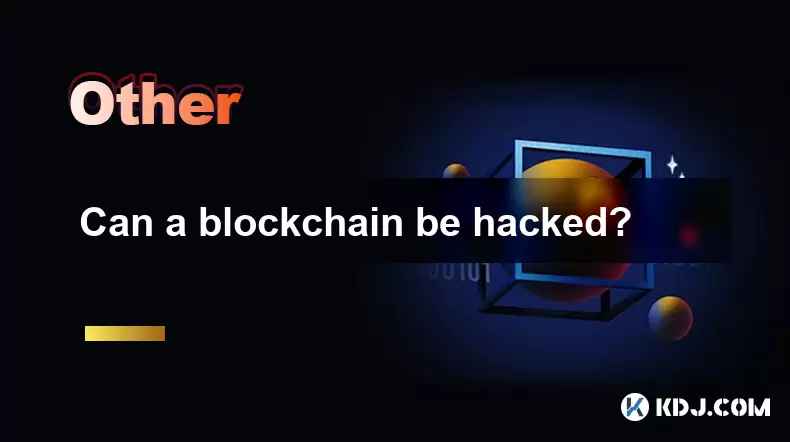-
 Bitcoin
Bitcoin $113600
-0.65% -
 Ethereum
Ethereum $3582
-2.02% -
 XRP
XRP $2.919
-4.02% -
 Tether USDt
Tether USDt $0.9999
-0.01% -
 BNB
BNB $749.8
-1.55% -
 Solana
Solana $162.1
-3.54% -
 USDC
USDC $0.9998
-0.01% -
 TRON
TRON $0.3318
-0.59% -
 Dogecoin
Dogecoin $0.1967
-4.77% -
 Cardano
Cardano $0.7148
-4.36% -
 Hyperliquid
Hyperliquid $37.30
-3.29% -
 Stellar
Stellar $0.3883
-4.29% -
 Sui
Sui $3.357
-4.00% -
 Bitcoin Cash
Bitcoin Cash $556.3
-1.84% -
 Chainlink
Chainlink $16.11
-4.08% -
 Hedera
Hedera $0.2344
-4.30% -
 Ethena USDe
Ethena USDe $1.001
0.00% -
 Avalanche
Avalanche $21.68
-4.66% -
 Litecoin
Litecoin $118.0
-3.37% -
 UNUS SED LEO
UNUS SED LEO $9.000
0.53% -
 Toncoin
Toncoin $3.161
-6.14% -
 Shiba Inu
Shiba Inu $0.00001193
-3.33% -
 Uniswap
Uniswap $9.434
-3.85% -
 Polkadot
Polkadot $3.577
-2.49% -
 Dai
Dai $0.9999
0.00% -
 Monero
Monero $288.7
-3.86% -
 Bitget Token
Bitget Token $4.209
-3.61% -
 Cronos
Cronos $0.1368
-1.06% -
 Pepe
Pepe $0.00001003
-4.60% -
 Aave
Aave $252.2
-3.73%
What is a blockchain oracle? How blockchain oracle works
Blockchain oracles bridge smart contracts with real-world data, enabling applications like DeFi, insurance, and supply chain tracking by securely connecting on-chain systems to external information sources.
Jun 19, 2025 at 06:57 am

Understanding the Concept of a Blockchain Oracle
A blockchain oracle acts as a bridge between blockchain networks and external data sources. In essence, it provides smart contracts with access to real-world information that is not natively available on-chain. Since blockchains are inherently deterministic systems—meaning they can only process data that is already part of their network—they rely on oracles to fetch and verify off-chain data.
Smart contracts execute automatically based on predefined conditions, but without accurate and reliable data inputs, their functionality is severely limited. Oracles solve this by enabling contracts to interact with external APIs, databases, or even physical sensors, thereby unlocking a wide range of decentralized applications (dApps) across various industries.
Example: A weather insurance smart contract may use an oracle to confirm whether rainfall in a specific region has exceeded a threshold before triggering a payout.
Types of Blockchain Oracles
Blockchain oracles come in several forms, each serving different use cases and security models:
- Software Oracles — These connect to online data sources such as websites, servers, or APIs. They are commonly used for financial data like cryptocurrency prices or stock values.
- Hardware Oracles — These interface with physical devices such as sensors, RFID tags, or IoT equipment. They are essential in supply chain management and logistics tracking.
- Inbound Oracles — Used to bring external data into the blockchain for smart contract execution.
- Outbound Oracles — Allow smart contracts to send data or instructions to external systems, such as initiating a bank transaction or updating a database.
- Consensus-Based Oracles — Multiple oracles provide data, and the final value is determined through consensus mechanisms, enhancing reliability and reducing manipulation risks.
Each type plays a crucial role depending on the application's requirements and trust assumptions.
How Blockchain Oracles Function
The operation of a blockchain oracle involves multiple stages to ensure data integrity and trustworthiness:
- Request Initiation — A smart contract emits an event requesting specific data from an oracle. This request is usually encoded within a transaction on the blockchain.
- Oracle Monitoring — Off-chain oracle nodes monitor the blockchain for such events. Once detected, the oracle processes the request.
- Data Retrieval — The oracle fetches the required data from external sources like APIs, databases, or sensor networks.
- Data Validation — Before returning the data, the oracle may perform validation checks. In decentralized oracle networks, multiple nodes retrieve the same data, and a consensus mechanism ensures accuracy.
- On-Chain Submission — The validated data is then submitted back to the blockchain via a transaction. The smart contract reads this input and executes accordingly.
This multi-step process ensures that smart contracts receive reliable and tamper-proof data, which is critical for high-stakes applications like DeFi, insurance, and gaming.
Trust and Security Considerations
One of the major challenges associated with blockchain oracles is the "oracle problem." Since smart contracts depend on external data, if the oracle is compromised or feeds incorrect data, the entire contract becomes unreliable.
To mitigate these risks, developers implement various strategies:
- Decentralization — Using multiple oracles instead of a single source reduces dependency on any one provider. Data is aggregated and validated through voting or averaging mechanisms.
- Reputation Systems — Some oracle networks assign reputation scores to node operators. Nodes that consistently provide accurate data gain trust and rewards, while malicious actors lose credibility and stake.
- Cryptographic Proofs — Advanced oracles employ zero-knowledge proofs or other cryptographic techniques to verify the authenticity of data without revealing its source.
- Economic Incentives — Token-based incentives encourage honest behavior among oracle providers. For example, staking mechanisms penalize dishonest reporting by slashing tokens.
These measures help maintain the integrity of the data feeding into the blockchain ecosystem.
Use Cases of Blockchain Oracles
Blockchain oracles enable a variety of real-world applications by connecting smart contracts with external data. Some notable use cases include:
- Decentralized Finance (DeFi) — Oracles provide price feeds for assets like ETH, BTC, or USD, allowing protocols to manage collateral, calculate interest rates, and execute trades.
- Insurance — Parametric insurance contracts can automatically trigger payouts based on verified data, such as flight delays or weather conditions.
- Gaming and NFTs — Randomness generators backed by oracles can be used to determine outcomes in games or mint unique NFT attributes.
- Supply Chain Management — Sensors and hardware oracles track goods in real-time, ensuring transparency and verifying delivery milestones.
- Prediction Markets — Platforms like Augur or Polymarket rely on oracles to report real-world event results so that markets can settle correctly.
These examples highlight how oracles extend the capabilities of blockchain beyond simple transactions to complex, data-driven automation.
Frequently Asked Questions
Q: Can a blockchain oracle be hacked?
While oracles themselves can be targeted, many modern oracle networks employ decentralization, encryption, and economic incentives to prevent manipulation. However, centralized oracles remain vulnerable points of failure.
Q: What is the difference between a centralized and decentralized oracle?
Centralized oracles are controlled by a single entity and pose higher trust and failure risks. Decentralized oracles operate across multiple nodes, enhancing reliability and reducing manipulation possibilities.
Q: Are all smart contracts dependent on oracles?
No. Simple smart contracts that do not require external data, such as token transfers or basic access control, can function without oracles. Complex contracts involving real-world data typically rely on them.
Q: How do oracles ensure data authenticity?
Oracles use cryptographic verification, multi-source aggregation, and consensus algorithms to validate data. Some also integrate trusted execution environments (TEEs) to enhance data integrity guarantees.
Disclaimer:info@kdj.com
The information provided is not trading advice. kdj.com does not assume any responsibility for any investments made based on the information provided in this article. Cryptocurrencies are highly volatile and it is highly recommended that you invest with caution after thorough research!
If you believe that the content used on this website infringes your copyright, please contact us immediately (info@kdj.com) and we will delete it promptly.
- DeriW Mainnet: Zero Gas Fees Revolutionize On-Chain Derivatives Trading
- 2025-08-06 10:30:11
- IOTA, Cloud Mining, and Eco-Friendly Crypto: A New York Investor's Take
- 2025-08-06 10:30:11
- Kaspa (KAS) Price Prediction: August 6 - Will It Break Free?
- 2025-08-06 10:50:12
- Meme Coin Mania: Arctic Pablo's Token Burn Ignites Presale Frenzy
- 2025-08-06 10:50:12
- Pi Network, Holders, and Market Turbulence: Navigating the Crypto Storm
- 2025-08-06 10:55:12
- XRP, DOGE, and the Altcoin Darling Dilemma: Where's the Alpha?
- 2025-08-06 08:30:11
Related knowledge

What is the purpose of a nonce in mining?
Aug 04,2025 at 05:56pm
Understanding the Role of a Nonce in Cryptocurrency MiningIn the world of cryptocurrency mining, the term nonce stands for 'number used only once.' Th...

Can data on a blockchain be deleted?
Aug 05,2025 at 04:00am
Understanding Blockchain ImmutabilityThe core principle behind most blockchain systems is immutability, which means that once data is recorded onto th...

What is the difference between on-chain and off-chain transactions?
Aug 02,2025 at 04:22pm
Understanding On-Chain TransactionsOn-chain transactions refer to digital asset transfers that are recorded directly on a blockchain ledger. These tra...

How are blocks linked together?
Aug 04,2025 at 06:56am
Understanding the Structure of a BlockchainA blockchain is a decentralized digital ledger composed of a sequence of blocks, each containing a list of ...

Can a blockchain be hacked?
Aug 05,2025 at 08:29am
Understanding Blockchain Architecture and Security PrinciplesBlockchain technology is built on a decentralized and distributed ledger system that reco...

What is a node's role in a blockchain network?
Aug 03,2025 at 03:16pm
Understanding the Function of a Node in a Blockchain NetworkA node is a fundamental component of any blockchain network, acting as a participant that ...

What is the purpose of a nonce in mining?
Aug 04,2025 at 05:56pm
Understanding the Role of a Nonce in Cryptocurrency MiningIn the world of cryptocurrency mining, the term nonce stands for 'number used only once.' Th...

Can data on a blockchain be deleted?
Aug 05,2025 at 04:00am
Understanding Blockchain ImmutabilityThe core principle behind most blockchain systems is immutability, which means that once data is recorded onto th...

What is the difference between on-chain and off-chain transactions?
Aug 02,2025 at 04:22pm
Understanding On-Chain TransactionsOn-chain transactions refer to digital asset transfers that are recorded directly on a blockchain ledger. These tra...

How are blocks linked together?
Aug 04,2025 at 06:56am
Understanding the Structure of a BlockchainA blockchain is a decentralized digital ledger composed of a sequence of blocks, each containing a list of ...

Can a blockchain be hacked?
Aug 05,2025 at 08:29am
Understanding Blockchain Architecture and Security PrinciplesBlockchain technology is built on a decentralized and distributed ledger system that reco...

What is a node's role in a blockchain network?
Aug 03,2025 at 03:16pm
Understanding the Function of a Node in a Blockchain NetworkA node is a fundamental component of any blockchain network, acting as a participant that ...
See all articles

























































































